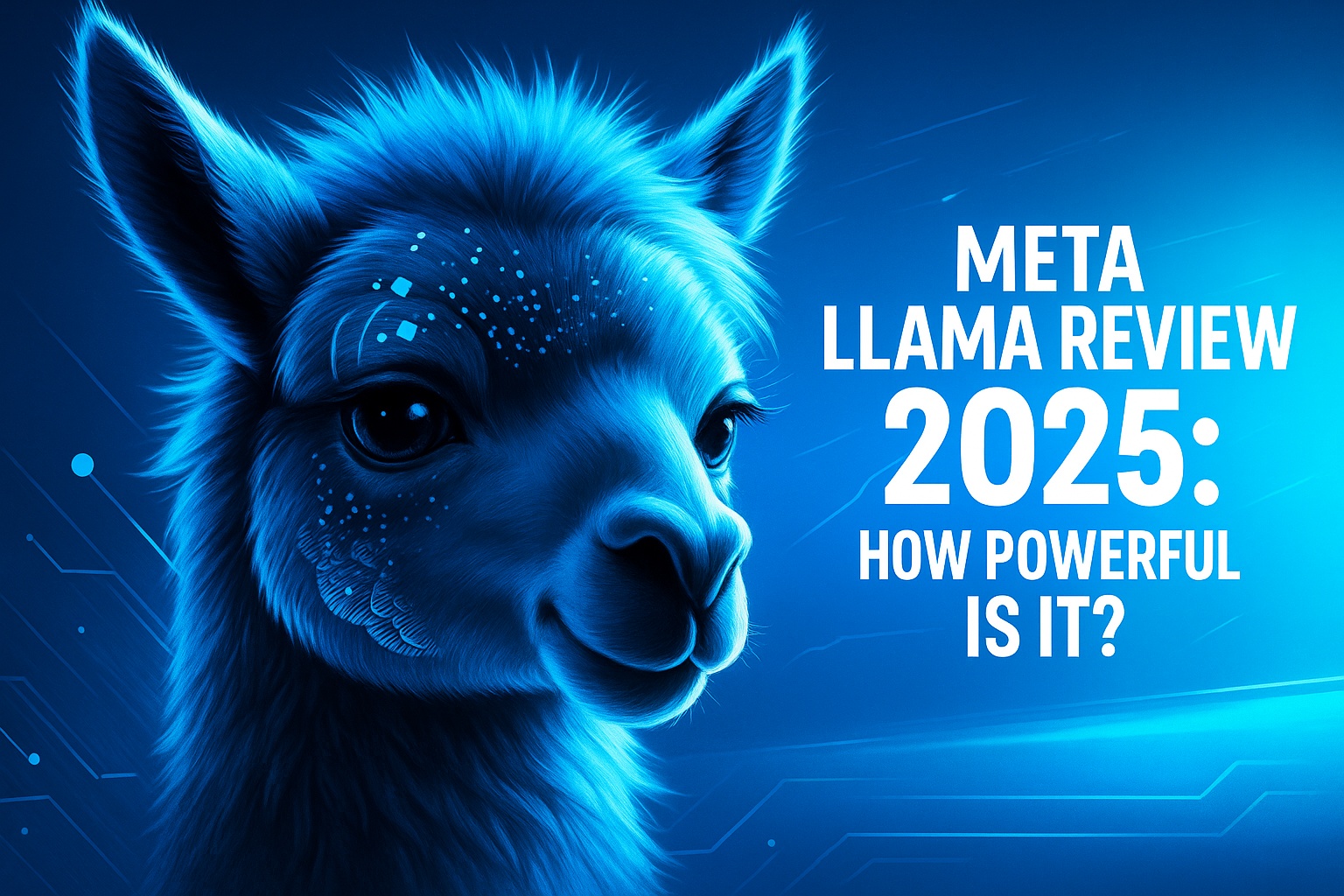Meta LLaMA review searches are climbing as developers and researchers evaluate Meta’s open-source large language model (LLM) against top commercial alternatives. With the release of LLaMA 3 in 2025, Meta aims to challenge OpenAI’s GPT-4, Google Gemini, and Anthropic Claude with a powerful, transparent alternative. But how does LLaMA actually perform—and is it suitable for real-world applications? This review answers all your questions.
What Is Meta LLaMA?
LLaMA (Large Language Model Meta AI) is a family of open-source AI models developed by Meta. First introduced in 2023 and significantly improved in 2024 and 2025, LLaMA 3 now comes in multiple sizes, including 8B, 13B, and the highly anticipated 65B parameter models. Unlike proprietary models like GPT-4, LLaMA is freely available for research and commercial use (with some restrictions), making it a popular choice for developers, startups, and enterprises looking for greater control and transparency.
Meta LLaMA Review: Key Features and Improvements
- Open-Source Access: Developers can fine-tune and deploy the model without relying on closed APIs.
- Multilingual Capabilities: LLaMA 3 supports over 30 languages with strong performance in English, Spanish, French, and German.
- Token Efficiency: More optimized architecture means LLaMA 3 processes inputs faster and at lower computational cost.
- Competitive Benchmarks: On key tasks like MMLU and GSM8K, LLaMA 3 rivals GPT-4 and Claude 3 in reasoning and coding tasks.
- Tool Use & Retrieval: With third-party plugins, LLaMA can access external tools, documents, and search engines.
LLaMA vs GPT-4 vs Claude 3
In this Meta LLaMA review, comparing Meta’s LLM with industry leaders is essential:
- GPT-4: Still the most widely used for general-purpose AI, GPT-4 edges out LLaMA in nuanced conversation and creativity. However, it’s closed-source and API-dependent.
- Claude 3: Known for safety and ethical alignment, Claude excels in summarization and document analysis, but LLaMA 3 comes close in open-book tasks.
- LLaMA 3: Leads in accessibility, fine-tuning flexibility, and local deployment—ideal for enterprises wanting AI control without vendor lock-in.
Overall, while GPT-4 remains slightly ahead in output polish, LLaMA 3’s transparency and customization options make it a strong contender.
Use Cases and Applications
One reason for the rise in Meta LLaMA review interest is its growing adoption across sectors:
- Chatbots: Build on-device or server-based assistants without relying on cloud APIs.
- Enterprise Knowledge Bots: Fine-tune LLaMA on internal documentation to support customer service and HR teams.
- Education & Tutoring: Create personalized AI tutors with multilingual and subject-specific capabilities.
- Scientific Research: Use LLaMA to analyze academic literature or simulate hypothesis testing.
- Programming Help: Integrate with tools like VS Code to provide code suggestions and debugging support.
How Easy Is It to Deploy LLaMA?
Deployment is easier than ever in 2025, thanks to tools like Hugging Face Transformers, Ollama, and vLLM. LLaMA can be fine-tuned on modest hardware or scaled up with GPU clusters in the cloud. Developers can:
- Run LLaMA locally on consumer-grade GPUs (especially 8B and 13B versions)
- Deploy with Docker or Kubernetes for backend applications
- Integrate via Python, Node.js, or C++ for embedded systems
Meta also offers documentation and licensing for commercial deployment, making it easier for teams to build AI responsibly and legally.
Performance Benchmarks
LLaMA 3 performs competitively in several standard tests:
- MMLU (Massive Multitask Language Understanding): LLaMA 3-65B scores within 5% of GPT-4.
- GSM8K (Math Reasoning): Achieves 83–86% accuracy with instruction tuning.
- HumanEval (Code Tasks): Matches GPT-3.5 Turbo and rivals Claude on coding prompts.
- TruthfulQA: Better factual grounding than previous LLaMA 2 releases.
These results show that LLaMA is not just “good enough”—it’s genuinely competitive at the highest levels.
Pros and Cons of Meta LLaMA
- Pros: Open-source, customizable, no API limits, strong performance, multilingual, ideal for private deployments.
- Cons: Requires more setup than ChatGPT, smaller ecosystem, fewer user-friendly tools for non-tech users.
Recent Updates in 2025
Meta continues to iterate on LLaMA with the following updates:
- LLaMA Guard: Built-in safety layer for toxic content detection and moderation.
- Vision Support: Early multimodal experiments allow basic image captioning and vision-based reasoning.
- Prompt Memory: Retains recent interactions for better context understanding in chats.
- Whisper Integration: Native speech-to-text input support for voice applications.
These enhancements position LLaMA as a serious open-source foundation for next-generation AI tools.
Who Should Use Meta LLaMA?
LLaMA is ideal for:
- AI startups building products without vendor lock-in
- Enterprises deploying AI with security and privacy concerns
- Academic researchers testing custom LLM configurations
- Developers creating offline or edge AI solutions
- Anyone needing powerful AI without usage limits or hidden costs
Final Verdict: Is Meta LLaMA Worth It?
This Meta LLaMA review shows that Meta’s LLM has matured into one of the most viable alternatives to proprietary models in 2025. With strong performance, full control, and rapid community development, LLaMA 3 is no longer just for researchers—it’s ready for production.
If you’re looking for a powerful, customizable, and open-source AI model for your next project, Meta LLaMA is absolutely worth your consideration.


